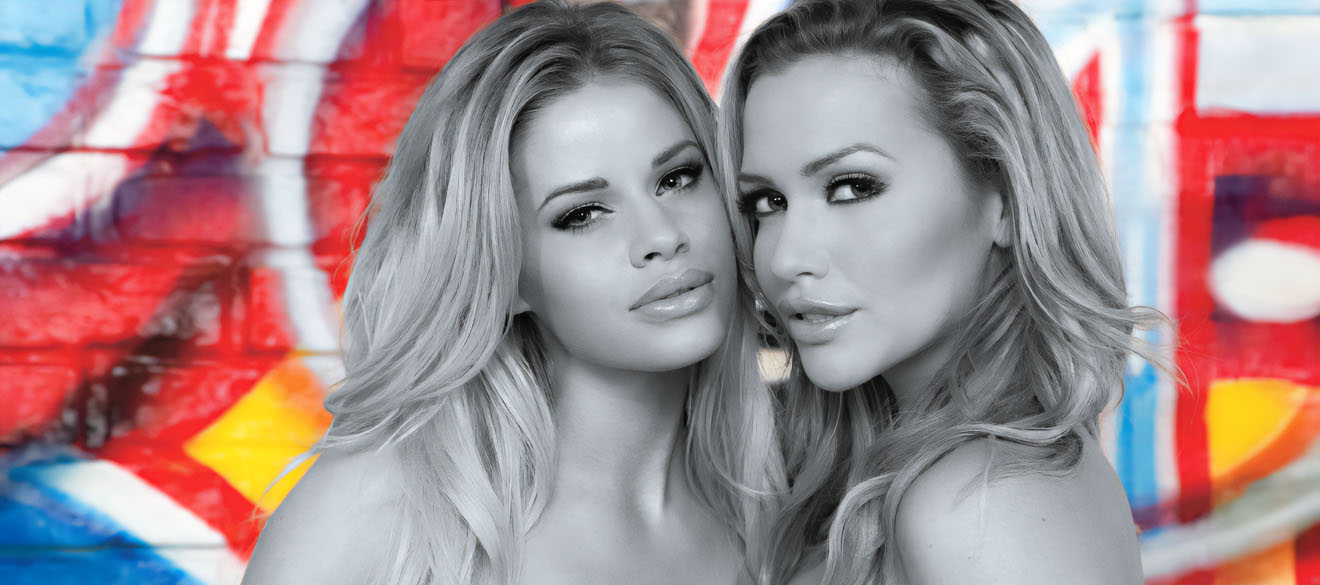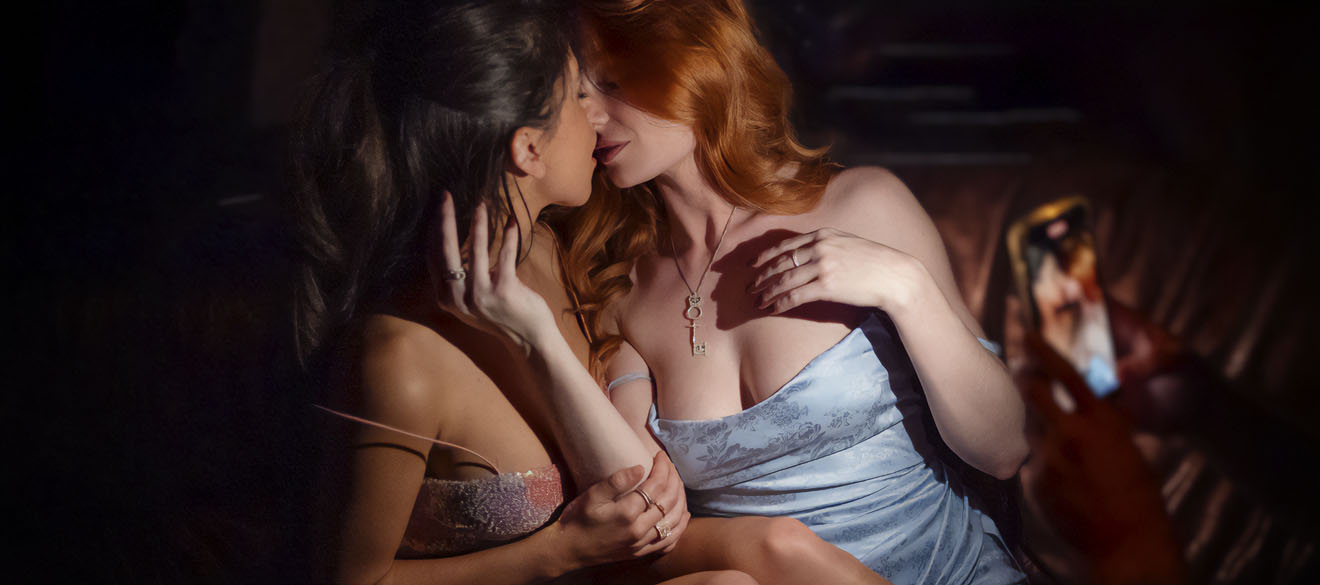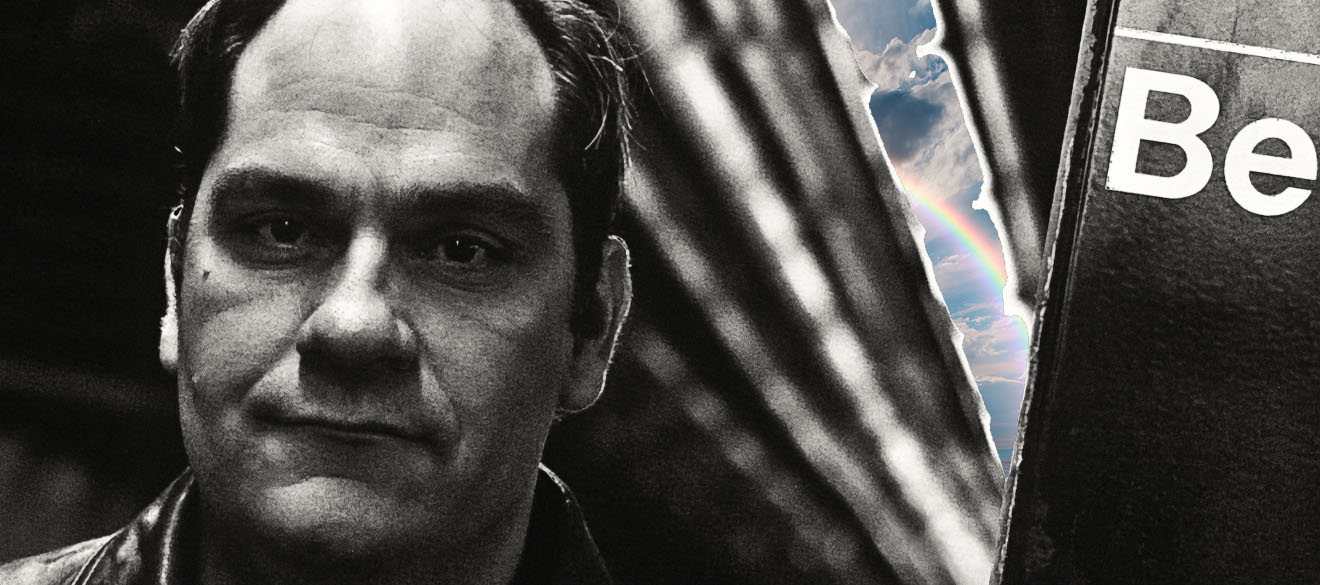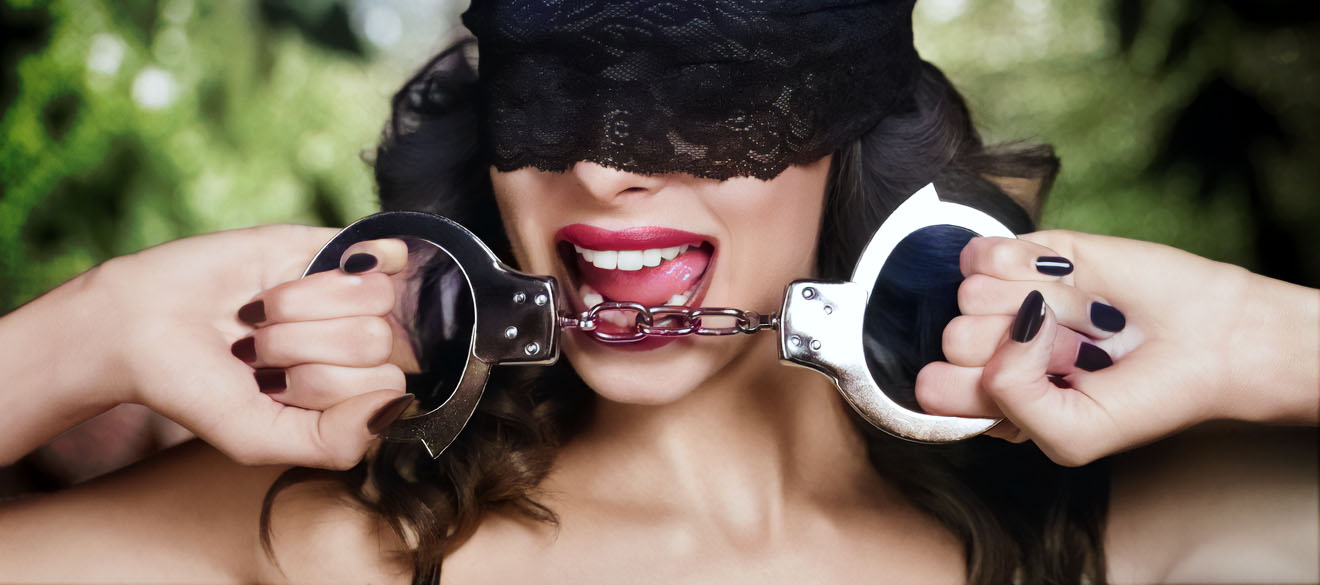A Stormi Maya Conversation
All right. I’m here with our pet Stormi Maya doing a quick AVN interview. So what have you been up to since you were Pet of the Month?
Stormi: I have been doing a lot of things within my music career and Cinnamon Babe. We have some amazing collabs in the works. I actually just had a song release today with the band Varsity. Our song “Rain Check” just got premiered on Sirius XM Octane. So I’m really excited for the music of 2024. Unfortunately, there was an acting strike all last year, so I wasn’t able to film any new projects.
Well, before that there was a show, right? What show were you on right after being a Pet?
 Stormi: I did lead my own show called Heaux Phase where I played a teenage mom and then I was in Irv Gotti’s movie called Made in America as a third lead. Right after Penthouse, I also was on the show Wu-Tang on Hulu and an HBO show That Damn Michael Che. I plan for a ton of new projects for 2024 too, now that the strike is over.
Stormi: I did lead my own show called Heaux Phase where I played a teenage mom and then I was in Irv Gotti’s movie called Made in America as a third lead. Right after Penthouse, I also was on the show Wu-Tang on Hulu and an HBO show That Damn Michael Che. I plan for a ton of new projects for 2024 too, now that the strike is over.
So last year I mostly focused on music. I did a lot of shows, and I collaborated with OTEP. …
Oh! That’s a big name…
Stormi: Now I have a song called “The MAN”
Were you able to film or record that in the studio with them…
Stormi: Oh, yes. We recorded together and then we did a music video together. And then she came out to one of my shows ‘cause I was performing at The Viper Room … me and Love Ghost – that’s who I perform with. We have a song coming out this year together as well. I have some great music stuff in the works, and I plan on going on a tour soon.
Nice. Is there anything you didn’t do? You did TV, then so much with your music. You had a baby…
Stormi: I had a baby in September. (laughs)
But you never stopped working, though, that whole time?
Stormi: No, I didn’t. I worked the entire time. I actually was pregnant when I went to Australia with Penthouse.
Oh, wow.
Stormi: I was eight weeks pregnant … I was dealing with some morning sickness on the 20 hour trip that left me tired…
And the time difference, too…
Stormi: I mean, I made it work, and I got through pregnancy. It made me a stronger person. And now I’m happily the proud owner of a baby boy. …
Oh! I’m in college now. I’m going for my bachelor’s in finance.
Nice. Okay. A pretty girl could do math.
Stormi: Yeah, I went to college already for two years for business administration. Focusing on, primarily, finance and marketing. Now I’m going for my bachelor’s in finance.
What’s the goal?
Stormi: You know what it is? I believe in it. I’m just not limiting myself. I like stacking on my accomplishments and showing what I can do, and I think that a woman like me who’s in this line of work … I think that it’s very empowering for someone like me to show that I also I’m intelligent, because I think one thing that gets used against us is that people in power think that we’re not intelligent.
They think we use our bodies because that’s a last resort. Instead of thinking, “Hey, maybe it’s a passion.” Or maybe we feel sexy, like, you know, we’re comfortable. We like it. We enjoy it. I think it’s a good representation for women like me that we’re multifaceted. I think that having a degree is a great backup plan.
It also helps you with critical thinking, and it helps you with your future, because who knows what you’re going to want to do down the road? People forget that like this is still a business, and it’s good to have a business brain while you’re in it.
People don’t realize the amount of marketing and branding, even the finance knowledge, that you have to know in order to…
In order not to get swindled…
Stormi: Exactly. It’s a business. A lot of guys think that we’re not smart women, but if you’re not smart in this industry, you’re going to get eaten alive. That’s what I’m doing now. … I have so many products in the works right now. For example, my AI clone just dropped today.
AI? Ok, add that to your accomplishments.
Stormi: Yeah, so I have this AI Clone where guys can speak to her 24/7, and a video version of her is coming soon as well. They’ll be able to video chat with her, and they’ll be able to request photos of her generated in any scenario. You can say, “I want to see Stormi naked in a Starbucks … I want to see Stormi naked inside of a football stadium or The Viper Room,” and you can have that created for you.
A lot of people criticized me for that decision too. They said, “why would you want to create a clone of yourself?” And I’m like, “AI is here. You’re either going to be a part of it or it’s going to get right past you, and you’re going to be begging to be on board after it’s already been gobbled up by everybody else.”
Or someone’s going to take advantage and do it without you.
Stormi: It’s going to happen one way or another. I’ve already Googled myself and have seen AI versions of me, so I might as well capitalize off it. It also kind of protects me because I have a contract signed with this company. They’re going to go after anybody that’s infringing on their rights. I sign over my likeness for the next two years to them, for AI, and so if anyone’s trying to replicate that, they’re going to go after them legally.
It actually, in a way, protects me because at least I’m going to get compensated for it. And they’re watching my back, and I’m in control of it. … Before the final decision with my AI, I sat down with the company. I got to tell them what I’m not comfortable with my AI doing and saying. She has my personality, and the things that she answers are accurate. If you ask her like, where were you born or what’s your favorite food … I gave that information to them. So you know it’s accurate.
I also have my own pocket pussy coming out.
You got molded, how was that experience?
Stormi: I got to do it privately. So I didn’t have I didn’t have an audience, luckily. I actually got instructions where I could do it myself. …
You didn’t have to go into one of those very sterile rooms…
Stormi: No, you get a kit. I was able to do it from home where it was more comfortable, and once again, I got to be on board with the packaging, how we’re going to market it, like that.
My followers are very excited about it. I’ve been thinking about adding some VR porn alongside with it, maybe some P.O.V. videos of me alongside of it would be hot.
Yeah. While they’re chatting up your AI bot…
Stormi: Exactly! You got your pocket pussy, playing the music … all the Stormi experience.
Then I also have my own hentai manga coming out.
No!
Stormi: Yes. Twenty-page short story of me as a giantess, and I’m having sex with all these regular-sized men. I’m very dominant. It’s even hand-drawn. I hired a script writer, everything. It’s going to print and I’m going to have a limited edition starting off. … It’s awesome. They drew these designs of me with the big hair…
I tell my followers, “She’s willing to do things I’m not willing to do because I don’t do boy/girl scenes and stuff. So it was a way for me to kind of give my followers stuff without having to compromise, but I’m comfortable with it.
Like with the clone and like hentai, I can give them a version of myself doing what they want without having to do it myself.
You’re very creative. I love it.
Stormi: They can still have a visual of me in these scenarios, but I don’t have problems with that. And they love it. I like to stay busy, and I like to create things for my followers to get excited about. … Oh! And my calendar just dropped.
I tell people I’m very old school with the way I do things. I feel like a lot of girls now, they miss so many money opportunities. You work hard to have such a huge brand. You can sell your followers almost anything if it’s on brand. … I feel like some people missed the mark, where I like to capitalize off all of it.
If they love it, they get to have parts of me. I’ve been doing a million things, staying busy right now at home all day. I’m constantly thinking of new ideas.
The movie industry is slow right now, so following up with other things, keeping busy, making money, and I’m trying to make some more … I can’t completely call it passive, but the majority qualifies as passive, income. And you don’t have to like it.
I don’t have to wake up every day and work on the AI clone and the pocket pussy. Once I put them out there, people start buying them, then the company will send them out. I’m doing the front-end work, but then once it’s set in stone, I don’t have to get up every day and work on it. So that’s what I’ve been doing. I do all the porn star stuff without being a porn star. So, you know, it’s good.
Let’s talk about your haters on IG and Twitter. They’re always coming for you — women in metal. They are out to get you. Thank you so much for pioneering that war, because that’s really what it is.
Stormi: Oh, my goodness… I think once you put yourself out there like a sex symbol … a lot of times, with any other lines you want to cross, they try to discredit you. They try discredit me as an actress … as a musician, as a businesswoman, anything … even as a mother. It’s like the Madonna whore complex, you know. Once you’re that whore to them, they can’t see you as anything else.
Because my messages are a little bit more radical and they’re deeper, they just can’t connect the dots. Like, “Why? How can this woman that shows her body also, you know, do anything else?”
It is sometimes funny balancing these different images of myself, like Cinnamon Babe. It’s powerful, strong, you know, that says whatever she wants. And then being like a man’s fantasy … it’s funny balancing both, because you realize a lot of men’s fantasy comes down to just you shutting up.
I mean, not your fans. …
Stormi: I think they love me, too, because they like dominant women. I used to be a dominatrix. I think that a lot of people who are attracted to me, they like more of the dominant woman.
Empowered women. Strong women.
Stormi: I think my followers like that I’m a kick ass bitch, you know.
And you don’t stop. You just keep going…
Stormi: When I was pregnant, I was doing content every day. I was livestreaming every day while I was pregnant. So I did a lot of pregnancy content … huge market for that, huge market for pregnancy and lactation. I definitely capitalize off of it.
Actually, when I was pregnant, I tried to hide it for a while because I was afraid of like how people were going to receive it. … You know, I lost like 50,000 followers on Instagram for it, and I did lose some of my OnlyFans people too. Honestly, it got me down at first. But then I thought about it a different way and decided to find people who like me the way I am currently. So I went out there and I marketed being sexy and pregnant, and I found my audience, and I felt very sexy while I was pregnant.
You know, I’m a sexy mama.
Okay, so you obviously were pregnant and then you lost followers when you announced it, correct? Do you think that when you can no longer do lactation videos, and now you don’t have the belly, that it’s going to flip back? Are you going to lose those followers and gain back other non-lactation mommy followers, or do you think they’ll stick with you?
Stormi: You know I try never to stress myself about who stays and goes. I have my big ones that stick with me no matter what, and I’ve had thousands of men who were with me from the beginning, and they were with me when I was pregnant, and they’re with me afterwards.
They’re loving me and all the versions that I come in.
They love you for you.
Stormi: I feel like I have more [followers] that I do focus on, not the flip floppers. I focus more on the ones that are dedicated to me. That’s where I keep my attention, you know? I can’t really get distracted by people who like me now but might not like me later.
I love that you’re so positive.
Stormi: Ha! … I try to be. You have to be. … You have to be. Being an entertainer in any regard, especially when you put yourself out there to the world, when you’re vulnerable with your body, it can be very mentally draining. Everyone’s going to comment on your most vulnerable self – you naked – and your body and how you look. You have to have a very thick skin for this.
I have that. I’m very tough, so the Internet doesn’t really faze me. I’m like, whatever…
I’m able to do what I love full time. I’ve been selling sexy for forever now, my whole adult life, really. I’ve been able to sell sexy since I turned 18 years old. I’m still selling sexy at age twenty-eight.
It’s keeping food on the table, so clearly I’m doing something right.
Clearly you are sexy.
Stormi: Thank you. I try. … I try. I really do.
All right. Do you have any last words or SOMETHING. Where should we be looking for more Stormi Maya?
Stormi: The AI will come from this company called me4u.ai where you’ll see my bot’s right up there. Um, the pocket pussy I will be releasing soon. Just follow on Instagram or any of my channels. Then the manga will be coming out around March 2024. … I’m doing everything basically one at a time, so it’s not like all jumbled up together.
And are you releasing merch with your manga? Can we get some Stormi Maya t-shirts?
Stormi: That will be coming next. … I have a lot of stuff coming for y’all this year, and the 2024 nude calendar is already out there. I have so much stuff coming this year. It’s just going to be a marketing mama session.
I love you, Penthouse. Thank you for always being there for me.
We could not find the calendar available anywhere, so it could be sold out it seems. We did find Stormi’s Site, though, which has a very fun BTS video (available for free) of the calendar shoot. You can bookmark the page, and even though you may have to keep track of the date yourself, you can still come back and visit Stormi a lot. That’s our plan. … OH! And if you somehow missed Stormi the first time around, her Pet Page is free too.



































 The Penthouse World According to Kelly Graval
The Penthouse World According to Kelly Graval






































